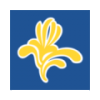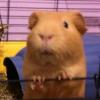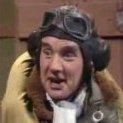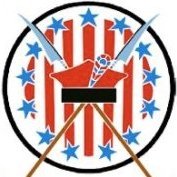Search the Community
Showing results for tags 'Albatros'.
-
3D-chutes expert is to release a 1/32nd Albatros D.V 3D printed kit. Source: https://www.facebook.com/permalink.php?story_fbid=pfbid09wuUZAmAtDoxUhf12f8YSkkyEuKKh3gx5JFWMoFqeXh7HacpQF8LLkGdAD458iA6l&id=100075905332821 V.P.
- 12 replies
-
- 5
-

-

-
- Albatros
- 3D-chutes expert
-
(and 1 more)
Tagged with:
-
Hello everyone, Here is my latest completion, the Eduard 1/48 Albatros D.III, built for the current Eduard WW1 group build over on Facebook. This kit traces its lineage back to the late 1990s, and still remains an excellent base model for further improvements. I made a few modifications, including correcting / re-scribing the nose panels, adding details to the kit engine and interior, adding a scratch built fuel tank, replacing the kit gun barrels and muzzles with MASTER metal items, adding nails to the fuselage, adding the aileron control arms to the upper wing, and replacing the undersized kit wheels, amongst other minor additions from various Eduard etched sets for the base kit. Rigging was done with elastic and utilising “Bob’s Buckles” metal turnbuckles. I painted the model in the markings of Ltn Gustav Nernst, Jasta 30, April 1917. All markings were sprayed using home made masks, and the serial number was also a home made decal. Paints were all SMS Acrylic Lacquers (my new favourite paint), with the fuselage plywood effect and propeller done with oil paints. Weathering was kept relatively light, given the somewhat short service life of these aircraft. And some progress shots: For my build log, please see here – https://forum.ww1aircraftmodels.com/index.php?topic=13996.0 Feedback, comments, and suggestions for improvements are always welcome and encouraged! Many thanks for looking! Brad
-
Well, I finally started to cut and fill plastic on the the Valom 1/72 D.H. 91 Albatros kit yesterday. My intention is to build it as one of the two mailplanes used by the RAF, in this case B-JW (earlier as one of the prototypes, E.3). At first, I thought this airframe would still have the split flaps of the two mailplanes (E.3 and G-AEVV) even after its partial reconstruction following a broken back accident that involved reconfiguration of the rear wing fillets to the airliner form. Now, I'm not so sure after peering at the various in-flight photos of B-JW. There is a hint of a change in tone of the upper surface colours where there could be a slotted flap, and the underside view shows the flap with five hinge points. Does anyone know, or have an opinion about whether these are the original split form or the later slotted version? I'll get some photos posted up at some point soon. Cheers, GrahamB
- 26 replies
-
- 2
-

-
- Valom 1/72
- D.H.91
-
(and 1 more)
Tagged with:
-
Hi all – here’s my latest completion, the Eduard 1/48 Albatros D.V, boxing number 8113. This one had a couple of modifications. I scratch built a number of internal details, including internal frames, a fuel tank, a compass, and other instruments. Details were added to the engine to better replicate the Mercedes D.III engine used on early DVs. Belts and other bits and bobs were also added inside. One of the enduring criticisms of the Eduard Albatros DV is the kit’s short undercarriage legs; accordingly, I replaced these with some resin aftermarket legs (I can’t remember who they are from, as I bought them a number of years back, but they were a bit rough). I also replaced the kit spinner with a home made vacform item, as the kit spinner is also too rounded and bulbous. I also hand-riveted the nails on the fuselage. Rigging is elastic, with “bob’s buckles” turnbuckles and sleeves. The exhaust pipe is a Rex metal item. The machine is painted in the markings of an early DV, D.2164/17, flown by 27 victory ace Karl Thom when he flew with Jasta 21, around June 1917. Thom would eventually earn the Pour le Merite, or “Blue Max”, on 01 November 1918, being one of the last aviation recipients of this revered award. Paint was a combination of oil paints for the fuselage, and SMS acrylic lacquers for the other colours (most were my own mix), and the decals from Eduard’s earlier 1124 dual combo boxing. Enough talk, here’s some pics: And some pics of the interior / modifications: For a more detailed build log, see here – https://forum.ww1aircraftmodels.com/index.php?topic=13255.0 This kit has been a stalwart of Eduard's WW1 line up for 20 or so years, and she still builds up as the best 1/48 DV on the market today. The kit's relative simplicity when it comes to struts and rigging also makes it a great kit for someone cutting their teeth on 1/48 WW1 models. Thanks for looking – feedback always welcomed! BC
- 34 replies
-
- 63
-

-

-
- WW1
- Albatros DV
-
(and 1 more)
Tagged with:
-
Aero L-159A/E Alca Special Markings (KPM0386) 1:72 Kovozávody Prostějov The L-39 was a fast jet trainer that was designed and manufactured in Czechoslovakia (as was) as a direct replacement for the earlier L-29 Delfin. It had success in its roles, and received numerous upgrades that resulted in new designations, and since the dismantling of the Soviet Union, some have found their way into private hands throughout the west, and they are often seen at airshows. It first flew in 1971, and was hoped to become the standard trainer across the Union, and following numerous upgrades by 1977 the ZA variant was put into service, fitted with a cannon and four hard-points for mounting various weapons in the Light Attack role. With the Soviet Union gone, the orders began to dry up, and an updated L-159 was produced in partnership with Boeing, using more modern avionics. To differentiate, it was called the Alca and first flew in 1997, with an order for 150 from the Czech government, deliveries starting at the beginning of the new millennium. The order was cut back due to budgetary issues, and the aircraft went into storage, eventually to be resold to Iraq where it has seen action against IS, and to Draken International, to be used for aggressor training. Following success with its new owners, the production line was restarted with modified airframes in single and two-seater guises. The Kit This is a reboxing of a 2018 tooling of the two-seater that has had additional parts to create a single-seat variant in previous boxings, but this version includes new decal options to warrant the “Special Markings” suffix. The A variant is the single seat Alca, while the E designation refers to the export version of the A. Like many of KP Models’ 1:72 kits, it arrives in a small end-opening box with a painting of the subject flying alongside a Spitfire in similar WWII livery, and on the rear are the profiles of the decal options in full colour. Inside are two sprues in grey styrene, a small clear sprue in a Ziploc bag, decal sheet, and the instruction booklet, which is printed in colour on folded A4 paper. Detail is good, with raised and recessed features throughout, including finely engraved panel lines and rivets, and a well-appointed cockpit. Construction begins with the landing gear for a change, starting with the nose gear leg, fitting the wheel between the legs of the yoke, and adding a detail part behind the pivot. The main gear legs are angled to the rear and have their wheels applied over the brake discs, then these assemblies are put to the side for later use. The ejection seat is next, adding sides to the seat, plus a bulky headbox, and an undocumented seatbelt decal to add extra interest. The cockpit is standard across boxings, having space for two seats moulded into it, as well as the side consoles, and a location for the separate control column and a pair of bulkheads that fix at the back of the forward cockpit and at the very rear. The seat and instrument panel are installed in the front, adding rudder pedals to the rear of the panel before you glue it in place, then building an avionics rack to fill the rear space, which is then mostly hidden by installing a three-sided cover over it, so judge for yourself how much will be seen. The exhaust for the single Honeywell/ITEC F124 turbofan engine is made from two halves with a rendition of the rear of the engine covering the forward end, and this too is put to the side while the two fuel tanks are built from two halves each, and a gun pod is made from two vertically split halves plus the twin muzzles. The fuselage halves are closed around the cockpit and exhaust, then the two intakes with separate splitter plates are fixed to the front of the sponsons on the sides of the fuselage, where a bit of dark paint will hide the dead-stop of the air-flow. A spine part covers the top of the fuselage, and coaming plus HUD glazing is added to the front of the cockpit cut-out over the instrument panel. The lower wings are full span and have the upper wing halves laid over the top before they are mated to the underside of the fuselage, adding the elevators to butt-joints either side of the moulded-in fin, which would benefit from pins to strengthen the joint. The canopy is glued over the cockpit, and two clear domes are added to the wingtips, inserting a pitot in each wing’s leading-edge 10mm from the tip fairings to complete the upper portion of the model. Underneath, the nose gear leg is inserted into a hole between the closed bay doors, and the main gear legs with additional captive doors fit into holes in the underside of the wings, adding three pylons outboard, the fuel tanks fitting to the innermost one. The gun pod fits on a small pylon on the centreline behind the nose gear, then it’s a case of adding a blade antenna under the nose, and a blister under the tail to complete the model. Markings There are three options available on the decal sheet, with full profiles on the back of the box, surrounded by oval colour swatches that show the colour names in English and Czech. From the box you can build one of the following: The decals appear to be printed using the same digital processes as Eduard are now using, and have good registration, sharpness, and colour density, with a thin gloss carrier film cut loosely around the printed areas. I mention Eduard because from 2021, the carrier film on their decals can be coaxed away from the printed part of the decal after they have been applied, effectively rendering them carrier film free, making the completed decals much thinner and more realistic, and obviating the need to apply successive coats of clear varnish to hide the edges of the carrier film. It’s a great step further in realism from my point of view, and saves a good quantity of precious modelling time into the bargain. Conclusion A nicely detailed model with three interesting decal options, especially the retro WWII choice, but the aggressors are both attractive alternatives. It’s a shame there’s no open canopy option, but not everyone likes those anyway. Highly recommended. Review sample courtesy of
-
Kovozávody Prostějov (KP) is to release 1/72nd Albatros C.III kits Source: https://www.modelforum.cz/viewtopic.php?f=1&t=95825&start=7740#p2245704 V.P.
- 18 replies
-
- 2
-

-
- Kovozávody Prostějov
- Albatros
-
(and 1 more)
Tagged with:
-
Had fun building the somewhat fiddly 1/72nd scale Roden Albatros kit (several of them are currently under construction in Mein Albatroswerke!)as the License Built OEFFAG that Brunowski, A-H Lead Ace, flew. The unique KuK camouflage was done freehand watching an evening of Television. Give me a Sunny Day and VOILA! the Dual Monarchy Again Takes to the Skies! BTW, just finished the book "The Fortress" by Alexander Watson - dealing with the siege of Przemysl and the "Bloodlands" of Eastern Europe. HIGHLY RECOMMENDED! Austria-Hungary's Polish province Galicia regional capital, Lviv, is now Ukraine....but Przemysl is in modern Poland - and in fact is now a major Refugee Center. The Borders in that area are very Fungible.....
- 3 replies
-
- 11
-

-
- Albatros
- Austrian Airforce
-
(and 1 more)
Tagged with:
-
Building the Wingnut Wing Albatros D.VA in 1/32 Scale Build Guide Series No.10 KLP Publishing Online publishing is now starting to find its way into the modelling community. KLP Publishing is one of the new online publishers, specialising in eBooks for the scale aircraft modelling community. Their debut title Building Brick’s Sabre in 1/32 Scale: A Scale Tribute to K.J. "Brick" Bricknell reviewed here has proved to be a success. They have since done titles on the Bird Dog, Spitfire XIVe, AEG G.IV Late, FW 189, He 219. P-51 and Ki-45 amongst others. Their latest title tackles building the Wingnut Wings Albatros D.VA. This was done by modeller Karim Bibi. Here the book looks in detail at the kit, as well as the aircraft itself. For the build itself construction and painting techniques are looked at along with some aftermarket being used such as HGW belts and the excellent looking Aviattic lozenge decals (links are provided in the pdf to all the aftermarket products used) . A mini tutorial is includes for making your own prop if you want to go that far. A large gallery of finished model pictures is included, along with photos of a real Mercedes engine. This is one area that e books do excel in as printing these pictures in a traditional format would be expensive. Conclusion This is the type of publication that the new digital format is made for. If you want a book for a specific build having a digital publication saves you space on your bookshelves. This is clearly a book written by modellers for modellers. The text is clear and concise and the great selection of crisp pictures is welcome, many more than you would get in a printed publication. Links to the various aftermarket sets is also welcome. A reminder that if you set up an account with KLP then you can download the revisioned copies of books you have already purchased to no extra cost. Very Highly recommended. Review sample courtesy of
-
LukGraph is to release a 1/32nd Albatros C.III resin kit. Source: https://www.facebook.com/LukGraph/posts/4270968876319777 3D renders V.P.
-
Hi All, Thought I'd offer a few WIPs of my Wingnut Wings 1/32 Albatros DV that I wanted to present using their 'Wooden Wonders' decal sheet markings. Here the fuselage is together and Pheon Models beautiful lozenge decals have gone on with no problems with the help of a little Micro Set and my wife's hair dryer! The wings are now taped in readiness for some Tamiya Smoke to highlight the rib shadings. Now the fuselage will be prepared for my first plunge into Uschi Van Der Rosten's Woodgrain Decals, which have attracted me for a while. These decals are transparent, so I'll highlight and preshade the individual panels with Gunze Radome and Tamiya Desert Sand that will show through them. That's all for now. More soon. Thanks for looking.
- 32 replies
-
- 4
-

-

1/144 - Grumman UF-1/HU-16B Albatros by Amodel - released
Homebee posted a topic in The Rumourmonger
Amodel is to release a 1/144th Grumman UF-1 Albatros kit - ref. 1424 Source: https://www.aviationmegastore.com/grumman-uf1-albatros-amdl14424-a-model-amdl1424-aircraft-scale-modelling/product/?action=prodinfo&art=79900 Box art V.P. -

Wingnut Wings Albatros B.II - 1/32 Wingnut Wings
Viking posted a topic in Ready for Inspection - Aircraft
Albatros B.II 1/32 Wingnut Wings The Albatros B.II was an unarmed 2 seater, almost unique in having been produced in 1913 before the Great War broke out, and remained in production until the Armistice in 1918. It was produced by many companies ,and with lost of subtle variations. The Observer sat in the forward cockpit, but I assume did not have the best of views, with the lower wings blocking his view downward, and the engine the view forward. His position was somewhat precarious, with his seat being mounted on top a the large petrol tank, another auxiliary tank above his head, and radiators with boiling water to either side. I just love the look of domestic type radiators plumbed in to the fuselage sides! The pilot sat in the rear cockpit with a big ship-type steering wheel. Fortunately I bought this kit before Wingnut Wings suddenly closed, and I'm glad I did because it was an absolute pleasure to build. I decided not to use the supplied woodgrain decal as it looked yo coarse and yellowish to me, so I instead used Uschi van der Rosten woodgrain decal over Tamiya XF-78 Wooden Deck Tan. The clear doped linen is my own brew of Tamiya acrylic, also using XF-78, white an yellow. I painted a representation of the upper wing crosses on the underside of the top wings, to represent the see through effect of the light coming from above. Can you see it in the next 2 photos?? The wheels come with etched brass spokes, 1 'disc' per side, and were very easy to, and look great. Plastic spoked wheels are also provided, but don't look anywhere near as good. Thanks for looking, John -
Completed today, Last entry for my Kosciuszko Squadron aircraft, unless someone knows of a 1/48 Spad 51. This is the Eduard Albatros D.III OEFFAG 253. Painted in Gunze colors and final coated with Mr Hobby Semi-Gloss. The decals are from a Polish supplier ,ModelMaker. These decals were fantastic. No bleed-through on the white, settled into panels and were not fragile in any way. I can't say enough about these decals. I did however ignore the recommendation for using a SWORL scheme on this aircraft. My sources say No SWORL. I used Ceramic rigging for cables and Uschi elastic thread for strut rigging. Albion tubes for gun barrels. Thanks for Looking and Comments always welcome Cheers Bill
-
Hi all This is my last finished model, an Albatros from Eduard in 1/48. Beautiful model, with a very good level of detail. But really hard to build, a test for our patience. It's my first 1/48 wwI model, and the first time I do wood textures... Cheers R.
- 20 replies
-
- 30
-

-
1:32 WNW Albatros D.Va Pheon 'Jasta 17' Decals Jagdstaffel 17 was formed in October 1916, and went on to produce many well known aces before the Great War ended in November 1918. Pheon decals produced a fabulous sheet in 2015 depicting many of their aircarft Reviewed here. I resolved at the time to build aone of them, and promptly ordered an Albatros from Wingnut Wings. Work got underway, but the project suffered delays due to work commitmnets, and work was only resumed on it a couple on months ago. I was torn between Hubertus Rudno-Rudzinski's 'Gisi' and Rudolph von Esebecks checkerboard marked D.Va. Von Esebeck won! If I can obtain another Albatros kit I will do another. At least the Roden D.III is still available, so Julius Buckler's 'Mops' may well be joining this one at some stage. Studying the photograph of this machine at the front of the Osprey Jasta 17 book showed what looks like a flare pistol port under the cockpit opening, and in front of the wappen shield. These were often fitted as a field modification, so I scratched on up from plasticard and tube. It then made sense to fit a rack of flares to the outher side of the cocpit opening. I went for a slightly darker coloured fuselage to provide more contrast with the yellow squares. The fuselage is covered with individual panels of Uschi van der Rosten woodgrain decals, which give a fantastic finish. Pheon's deacls performed flawlessly and that big checekerboard went on in 1 piece and fitted perfectly, joining precisely on the underside. Rigging is with Maxima Chameleon fishing line and stretched cotton bud turnbuckles. I found the book written by the CO, Julius Buckler, for only £3 on Amazon! Thanks for looking, John
- 22 replies
-
- 40
-

-

-
- Wingnut Wings
- Pheon
-
(and 1 more)
Tagged with:
-
Hi All Having just returned to modelling I wanted to look to do one of my favourite WW1 aircraft the Albatros. I have tried to look for a post for this before but couldn't find one, so my question is, do I go Roden or Wingnut Wings for a 1/32 Albatros?
-
Pictures of a test shot at the All Japan Model & Hobby Show 2012 (11-14/10/2012). Source: http://happy.ap.teac...gcate18/archive Source: http://www.1999.co.jp/blog/1210123 Source: http://www.hlj.com/s...12overseas.html V.P.
-
L-39Cs Pics taken at The Ukraine State Aviation Museum Zhulyany, Kiev. Pics thanks to Dave Haskell.
-
Viribus Unitis, OEFFAG Albatros D.III 1:48 Eduard (11124) The Albatros D.1 was the first of the series of single seat fighters that were developed up to the D.Va, featuring a semi monocoque wooden fuselage and equal span, equal chord upper & lower wings. By lowering the top wing and moving it slightly forward to improve visibility, the aircraft was re-designated the D.II. Impressed by the performance of the French Nieuport fighters with their sesquiplane layout (lower wing smaller than upper wing), new wings were developed by Albatros, with the aircraft now becoming the D.III. Later on, a new more rounded fuselage was designed and fitted with the new wings, becoming the Albatros D.V and D.Va. However, there was a major flaw with the lower wings on the D.III and D.V/DVa’s in that they only has a single spar. This made them weak and prone to shedding the lower wings during stressful manoeuvres. Despite this the Oesterreichische Flugzeugfabrik AG (Oeffag) selected the D.III to build under licence, as the Austro-Hungarian air force was in desperate need of modern equipment. OEFFAG made a number of changes, utilising the excellent Austro-Daimler 180hp engine, Schwarzlose machine guns, and most importantly, strengthened double spar lower wings. Three main versions were produced. Series 53. 64 produced, closely resembled the original Albatros design. Series 153. Improved 200 hp Austro-Daimler engine fitted. From Aircraft 112 to 281 a shorter more rounded nose was fitted, which increased the top speed and gave the aircraft its more familiar look. Series 253. Improved 225 hp Austro-Daimler engine fitted. The most noticeable change was that most were built with the guns on top of the fuselage rather than enclosed inside it. The Kit. Curious as to what ‘Viribus Unitis’ is I looked it up via google and found that it means ‘With United Forces’, and was the personal motto of Emperor Franz Joseph. Thus it is quite an appropriate title for a ‘Dual Combo’ kit containing two Austro-Hungarian aircraft models. The box artwork features two well known aces, Godwin Brumowski in his all red 153, and Friedrich Navratil following behind in a 253. As a ‘Dual Combo’ release, the large box contains two of all sprues, a sheet of masks, and four etched frets. The instructions are in colour with a sprue map, assembly sequence, rigging diagram, and nine different colour schemes, covering series 53, 153, and 253 machines. Sprue A and B. All the small and fine detail parts are provided on these two sprues. Neatly moulded in Eduards’ standard grey plastic they feature sharp detail, and delicate scale like appearance. A number of parts are not required and these are clearly marked on the sprue map. Attachment points are minimal, which always makes removal and clean up an easy job. Sprue C. The fuselage is beautifully moulded with delicate panel lines and perfectly formed brackets, panels, and louvres etc. The top decking in front of the cockpit is provided as a separate part, with alternatives for the enclosed guns (Part C3) and the external guns(Part D2) often fitted to the series 253s. However only part C3 is relevant for all the options here. Winter engine covers, tailplanes, ailerons, and elevator complete the parts provided here. Note that C5, C7 and C9 are the later wire scalloped ailerons and elevator for the series 253, whilst D3, D5, and D6 provide the same ‘smooth edged’ parts for the series 53 & 153 machines. Nice attention to detail here from Eduard! Sprue D. As mentioned, the alternative ailerons and elevators for the series 53 & 153 machines are found here, along with the rudder, unused external gun decking, and the wings. Trailing edges are very fine indeed, and the rib detail is well defined. The lower wings have a ‘tongue’ which fits into a matching ‘groove’ on the fuselage sides. These are both quite small. So be sure to clean off any primer/paint from the mating surfaces when fixing these parts together, if you choose to paint the fuselage and lower wings separately. Sprue X. A very nice little Austro-Daimler 6 cylinder in-line engine is provided, with separate rocker cover and cylinder head detail. Twin magnetos are also supplied, so if you have really good eyesight you could consider wiring them up to the plugs with fine fuse wire. Pre printed data plates fit on the crank case, making this one of the most detailed engines in any of Eduard’s 1:48 Great War range. Etch. A total of four etched frets are provided, two are the same pre printed set and cover the seatbelts and instruments. A third fret is 53/153 specific, whilst the fourth is for the series 253. There is not much difference between frets 3 & 4, the fuselage front plate for the 53/153 being the only difference I can see. It is not needed anyway, as none of the kit options are for a spinnerless 153. So you can in fact build any two of the options in this kit, without being limited to making a 253 and one other. Other items on the frets are the cockpit seat, engine details, undercarriage mounting strap, inspection hatches, wheel valve covers, control cranks with lines on, etc. All of the items are very useful, and will certainly enhance the finished model. Mask. One small sheet of Kabuki tape is provided, with pre cut wheel masks. These go on the hub, enabling you to brush paint the tyres and get a sharp dividing line. There are eight on the sheet to mask up both sides of all four wheels, with two per aircraft. Options. A total of nine options are offered, five for series 153s and a further four for series 253s. A and B are early 153’s with a propeller spinner, whilst all the rest have the spinnerless rounded ‘pug’ nose typical of the OEF 153/253. A. 153.11, flown by Oberleutnant Frank Linke-Crawford, Flik 41J, Aiello del Friuli, Italy, November 1917. B. 153.80, flown by Offizierstellvertreter Julius Arigi, Flik 55J, Pergine Valsugana, Italy, December 1917. C. 153.125, flown by Hauptman Lázsló Háry, Flik 42J, Pianzano, Italy, Spring 1918. D. 153.167, pilot unknown, Flik 2D, San Pietro in Campo, Italy, May 1918. E. 153.206, flown by Hauptmann Godwin Brumowski, CO of Flik 41J, Portobuffole, Italy, June 1918. F. 253.09, flown by Hauptmann Friedrich Navratil, CO of Flik 3J, Romagnano, Italy, July/August 1918. G. 253.12, flown by Oberleutenant in der Reserve Ludwig Hautzmayer, CO of Flik 61J, Ghirano, Italy, Summer 1918. H. 253.24, flown by Hauptmann Benno Fiala von Fernbrugg, CO of Flik 51J, Ghirano, September 1918. I. 253.117, flown by Oberleutnant in der Reserve Stefan Stec, Flik 3J, Romagnano, Italy, Summer 1918. Decals. the markings are slit across two sheets, one with all the black and white items such as the wing crosses & serial numbres, and a the other with all the coloured items for the personal markings. They are all beautifully printed, with sharp edges, good colours, and minimal carrier film. A mass of stencilling detail is also provided, which has its own page in the intruction booklet, to show where each individual item goes. Instrument dials and even propeller manufactures logos complete the sheets. One small gripe I have is the resealable bags used. When I extracted the decals from the bag and trying to keep the protective paper in place, the folded flap snapped back and the sticky strip attached itself to the decal sheet. Gently pulling it away resulted in slight damage to the large '5X' on the black and white sheet. Conclusion. This kit has been around for a few years now, but is still one of the very best 1:48 Great War models. I eagerly built a few when it first came out (see below), and found it to be an excellent model. The fit was faultless, and I do not remember there being any problems or pitfalls with it. I really like the look of the 153/253 with the rounded nose, it somehow makes the aircraft look more aggressive, and there some great colour schemes to go on it. These are not as obscure as might seem at first look, as RFC/RAF squadrons were posted Italy and took part in combat against these machines. Aces such as William Barker scoring the majority of his 50 victories on this front. Having two kits in the one box makes it slightly easier to choose which ones to do, and Eduard have done a good job in offering fairly simple schemes such as E and F, up to more complex ones like A and I, so something for everyone. This is a really lovely ‘Dual Combo’, with two superbly engineered kits covering some very interesting markings, plenty of etched details, masks, and super quality decals. Highly Recommended. Review sample courtesy of Footnote. Digging around in the completed models stash, I have this one, It is not from this release, but is the same plastic. It is from 'Albatros D. III OEFFAG 253,Kit No 8242' which I built a few years ago. A lovely little models and a very enjoyable build.
-
Albatros D.III OEFFAG Overtrees 1:48 Eduard (8241X) Albatros D.III OEFFAG 153 PE-Set 1:48 Eduard (8241-LEPT) Albatros D.III OEFFAG 253 PE-Set 1:48 Eduard (8242-LEPT) Plastic ‘Overtrees’. From time to time Eduard offer some of their kits as ‘Overtrees’ editions. These contain just the plastic parts for the particular model with no instructions or decals, and come in a plain white box. The idea is that with the multiple options for markings in most Eduard kits, you can use these overtrees to build another of the options provided in the original kit. Also, you can use them with aftermarket decals, as even if you don’t have the original kit, Eduard provide the instructions in pdf format on their website. This release offers all five plastic sprues from the OEFFAG 152 / 153 kits, and will enable you to build one or the other, with the options of ‘prop & spinner’ , ‘blunt’, or ‘snub’ noses, and internal or externally mounted machine guns. It is therefore compatible with any of Eduard’s previous OEFFAG releases and can be used with any of the optional decals within them., for example the recently reviewed 'Viribus Unitis Dual Combo reviewed here. which contains two kits and nine finishing options! Note that this overtree box contains one aircraft. It is beautifully moulded with fine and accurate detail, and builds up very nicely with no issues. It is certainly one of the best 1:48 biplane kits available. Often when you buy a new kit, it can be hard to decide which option to finish it in, and you can find yourself dithering between your two (or three!) favourite choices. These overtree releases are a great idea, and offer a cheap and effective way to get another set of sprues, and build all the options you want!# Etched sets. Should you want to add the set of etched items to your overtree kit, fear not for they are also available to accompany it. There is a set each for the OEFFAG 152 and the OEFFAG 253 with quite a lot of differences between them, so you may need to decide which one you are going to build before you order. Two frets are supplied in each, and like the overtree kit they do come with any instructions. In both sets the smaller fret is pre-painted and holds the instruments and seatbelts, but the seatbelts are quite different styles. The main frets are unpainted and share some common parts, but the 153 has a complete seat, ‘blunt’ nose plate, and undercarriage mounting strap. Both have parts for the engine, inspection covers, elevator control horns & wires, propeller hub, wheels, and several minor details. Conclusion. A great idea, these sets are only available direct from Eduards own website. Get them while you can, they are always popular and sell out rapidly. Review samples courtesy of







